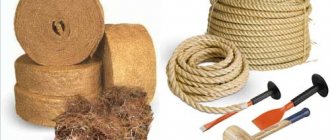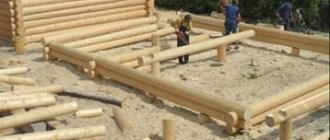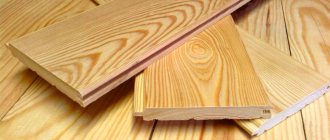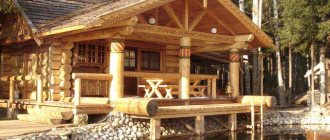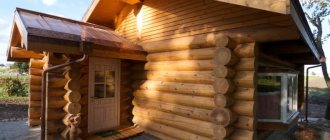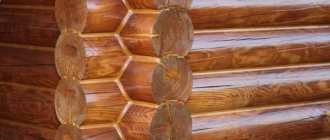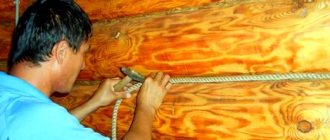Before you start building a wooden house, you need to choose which type of log cutting is most suitable for the project.
Options for cutting log houses.
At the moment, there are two main methods of cutting wooden houses, these are the claw and bowl methods.
The main difference between the claw and bowl assembly is the difference in the processing of the corner joints of the house. The most suitable one should be selected based on the characteristics of the construction site and weather conditions.
Expert opinions
The main advantages of a log house in a bowl are the reliability of the design. Thanks to the bowl, the crowns are firmly attached to each other, and it is not necessary to use fasteners such as dowels in construction. The result is stronger corners that are well protected from atmospheric influences. Therefore, the frame in the bowl is durable. The disadvantages of this cutting include its cost. It will be necessary to purchase a large amount of wooden material, because... in the corners, about 50 cm of crowns should protrude beyond the plane of the log house wall.
Logging in paw is less popular. Basically, the choice is made on this particular felling option because of its affordable cost, which is 20% lower than the bowl construction method. It is much easier to cover such a log house with facing materials (siding, boards, clapboard, etc.). But it is more difficult to chop; the paw needs to be prepared much more carefully than the bowl. The ends of the logs do not protrude beyond the perpendicular plane of the wall. From here the corner turns out to be cold, not protected from an aggressive atmospheric environment.
Both options for a log house are good, but only if they are cut by professionals. It has a beautiful appearance, an antique log house, cut into a bowl, and cheaper in the paw.
How to cut down a bathhouse correctly
It is clear that the use of metal plates, dowels and jacks allows the log house to relatively safely “survive” the two-year shrinkage process with minimal damage to the timber or log. But in the end, the quality of the bathhouse is determined not even by the stability and strength of the log house, but by how correctly the cutting of the locks and caulking of the seams was done. This determines whether cracks will appear after shrinkage and whether heat will escape through cold bridges.
For a bathhouse chopped into a bowl, a few concrete blocks are enough; for a log house, a more serious foundation will be required
In a residential building, heat leaks can be easily sealed with acrylic sealants. This method is unsuitable in a bathhouse, since the log frame heats up periodically, and accordingly, the entire silicone seal will easily fall off in the first frost.
Tips for woodcutters
A log house with a bowl is well suited for northern regions where severe frosts prevail. It is easier to chop it than to cut it with a paw, but the cost of such a wooden building will not please everyone. And if there is a desire to cover it with facing material in the future, it will not be easy to do this without skill.
The bowl is made using an ax. Its depth should be such that the upper rims are raised by 0.5 of their diameter. It should be taken into account that another layer of insulating material (tape or moss, tow) must be laid in the inter-crown groove with a layer of at least 5 cm in order to reduce the heat loss of the log house.
The work can also be done with a chainsaw, then the assembly of the log house will be faster, but to obtain a high-quality wooden building it is still better to use an ax. Each time this tool hits the wood, its fibers are sealed, which prevents moisture and other pests from penetrating inside the trunk. A chainsaw, on the contrary, tears these fibers, thereby increasing the water permeability of the wood, which can lead to its rapid rotting.
The frame is assembled with the bowl facing down so that rain and other moisture do not accumulate in it and cause harm to the material. You can also do it with the bowl up, but almost no one uses this option. It is also necessary to take into account the direction of the annual rings on the wood. They should be placed inside the log house with the south side (where the annual rings are wider), and the north side of the tree should be placed outside (where the rings are denser). This nuance will help improve the thermal protection of a wooden house. The option of cutting a log into a bowl develops over time, some aspects of the technology change slightly, for example, Norwegian cutting into a bowl, Canadian, etc.
But the corner joint in the paw is made using a chainsaw. This tool opens the pores of the wood, which leads to rapid rotting of the corner. The logs for erecting a log house in a foot must be of equal thickness, the foot must be accurate, even small deviations can lead to skew of the entire building. For cutting a log house, mainly two types of logs are used: rounded and chopped.
Log sauna with a paw and a bowl: photo
Log steam rooms and saunas differ from ordinary frame and brick buildings not only in their long service life and good thermal insulation. Using log house technology is also a good way to make the design of a bathhouse more impressive and interesting.
Developer reviews
In-line cylindering of wood takes place on a special machine. But not all entrepreneurs use a new, high-quality machine; more often, equipment is not of the best quality, which results in a log with non-ideal proportions. And when cutting a log house, such material will have to be adjusted, although the cost of these logs is not high.
Logs that have undergone strict rounding have equal proportions and an ideal round shape. A frame made from such crowns is easy to cut. But to achieve this result, its entire protective layer is removed from the tree trunk, and without treatment, the surface of the material will quickly become covered with cracks, mold, etc. And manually rounded logs have the highest price, because it takes a lot of time to process one crown. This rounding method is used most often when it is necessary to give an even shape to a log with a large diameter.
The advantages of rounded logs are their attractive and aesthetic appearance. And also in the minimum time spent on construction, the logs are even, they fit easily. The disadvantage of rounded logs is the removal of their protective top layer during processing. Over time, the walls of the log house will acquire an unsightly appearance; cracks that appear will reduce the thermal insulation characteristics of the building, thereby increasing the cost of heating the room.
Hand-cut logs deserve great attention. They are processed by human hands using only carpentry tools, without the use of any modern equipment. The bark is removed from the trunk using a flat shovel or a special tool - a scraper, while the protective layer of the tree remains intact. All knots and other irregularities are removed with an ax (but defects are rare, since the trees that are as smooth and clean as possible are selected), then everything is smoothed out with a plane. Treating chopped logs with protective chemicals is not necessary, but it is recommended to do so. After all, a tree without bark becomes sensitive to all adverse influences; it will be difficult for it to resist them on its own. Then the markings are made accurately, and with the help of an ax the bowl or paw is cut out. The advantage of chopped logs is that you can use trees of any diameter and length, there are no restrictions. The wood suffers only slightly during processing; all its fibers become clogged as a result. The disadvantage of chopped logs is the high cost and the time it takes to prepare and cut the log house.
Reviews from "experienced"
To build a house, and especially a bathhouse, it is better to use chopped logs. I'll explain why. After processing, rounded wooden material loses its protective layer. Therefore, it can last no more than 15 years. In addition, these logs will need to be constantly treated with protective chemical compounds. But for living quarters and baths, this is not recommended, otherwise no benefits will be obtained from bath procedures, but colossal harm to health can be caused.
As for the cutting method, there is no point in saving on this work process. We recommend cutting wooden walls into a bowl for residential buildings. Such log houses can stand for many years without any problems. Corner joints, made in the paw even by professionals in winter, often freeze. Inside the building, frost appears in the corners of the wall. Internal insulation of a log house will not help cope with it; only cladding and insulation of external walls can help. But it’s not always possible to choose the right insulation material. To do this, it is necessary to make a lot of technical calculations in order to reliably eliminate freezing of corners.
As a result of the construction of a log house, an environmentally friendly building with a beautiful appearance, clean air and a forest aroma in the room is obtained. And with the right choice of logs and high-quality assembly of corner joints, the building will be durable and have high thermal insulation characteristics.
Types of shrinkage
It is clear that shrinkage processes in a log house are not limited to changes in the length and thickness of logs or beams due to changes in the moisture content of the material. In addition to the drying process of wood, structural elements can change their sizes for two reasons:
- Mechanical pressure of the upper tiers and parts of the roof rafter system. The lower crowns of the walls and parts of the logs on the north side of the bathhouse are more deformed due to the weight of the upper rows and more intense moisture;
- The presence of jute or linen seal between the crowns. Under the pressure of logs or timber, the fresh layer of compaction is eventually flattened and crushed. Since the bathhouse is used periodically, the process of squeezing out the seal occurs regularly.
The first type of shrinkage gives approximately 90% of the change in dimensions; after about 30 months, the structural deformations of the bathhouse frame parts are completed. The remaining 10% does not end as long as the bathhouse is regularly heated and heated with hot steam.
Important! Shrinkage of the log house can also occur due to improper installation of the seal or rough caulking of the joints.
For example, a three-year-old bathhouse box must be caulked between the roof gaps before final finishing and installation of the roof. If you hammer in a cord or tow with too much force, the box may become 5-7 cm higher, instead of the generally accepted 2-3 cm. After completion of the work, the weight of the roof parts and the finished roofing covering will press the seal. As a result, a turn-key finished bathhouse will shrink by 3-4 cm. Cracks and chips may appear in the finishing; this situation is especially dangerous for window and door openings.
The main part of the shrinkage is due to the deformation of the seal and the contact points between the logs
